Fail Open (Spring-to-Open, Air-to-Close)
The actuator is spring-to-open, air-to-close type. Operation is via a normally closed 3 way, 2 position (3/2) solenoid valve.
When the solenoid is energized, valve closes and when de-energized, the valve opens. The valve will fail open in the event of loss of electrical power to the solenoid valve.
Air pressure on the top side of the actuator diaphragm closes the valve; a spring opens the valve.
Fail Close (Spring-to-Close, Air-to-Open)
This is the reverse of the Fail Open (Spring-to-Open, Air-to-Close) type valves. The valve is springto-close and air-to-open. Operation is via a normally closed 3 way, 2 position (3/2) solenoid valve.
When the solenoid is energized, the valve opens and when de-energized, the valve closes. The valve will fail closed in the event of loss of electrical power to the solenoid valve.
Air pressure on the underside of the actuator diaphragm opens the valve. A spring or set of springs closes the valve.
Double Acting (Air-to-Close, Air-to-Open)
This type of actuator is similar in functionality as a double acting piston cylinder. Operation is via a 4 way, 2 position (4/2) solenoid valve. Standard set-up is valve closed when solenoid valve is de-energizes and opens when energized.
There is no fail position unless provided with an auxiliary source of air supply. Note that diaphragm valves will tend to open when line pressure is present.
Alternatively, the valve can be controlled by means of two 3 way, 2 position (3/2) solenoid valves in lieu of one 4 way, 2 position (4/2) solenoid valve.
In this arrangement, one solenoid valve is allowing air to one side of actuator chamber and the other solenoid valve is venting trapped air from the other chamber via the exhaust port.
In this below schematic, snap acting relay is added to the control circuit and utilizing the normal air supply for pilot pressure source.
This arrangement can be used to lock the actuator in its last position in the event of loss of pilot pressure but the auxiliary air source port will be plugged.
Source : engvalves
Read Next:
- Solenoid Valve with Reset
- Control Valve Fail Safe Action
- 4-way Solenoid Valve
- Reversing Actuator Fail Safe
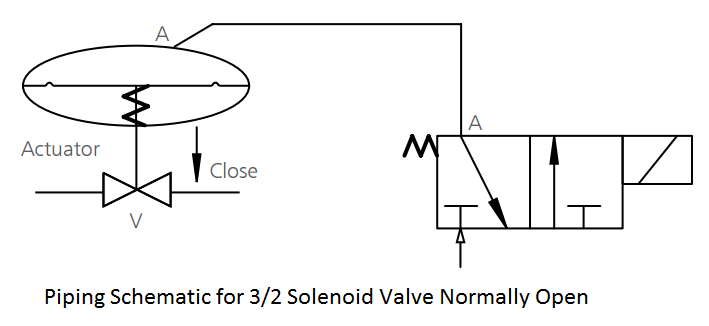
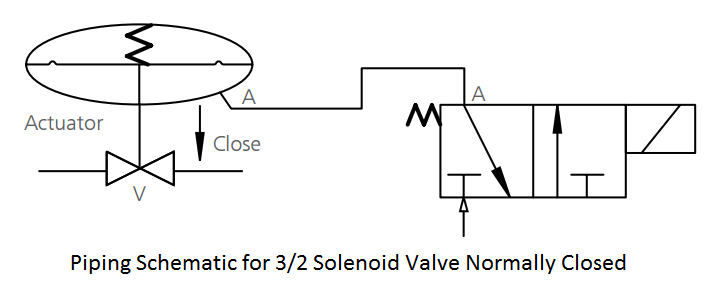
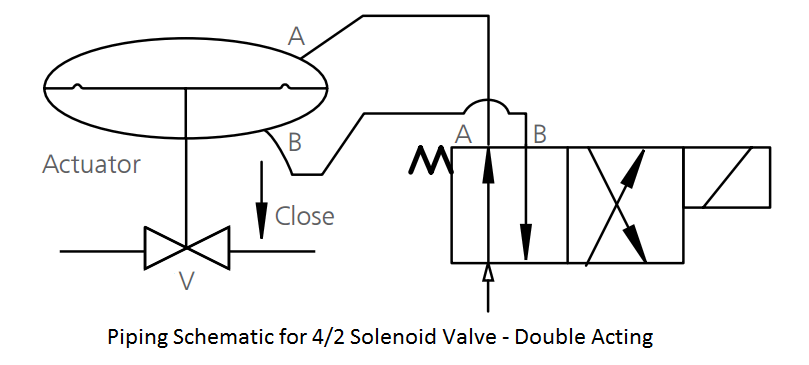
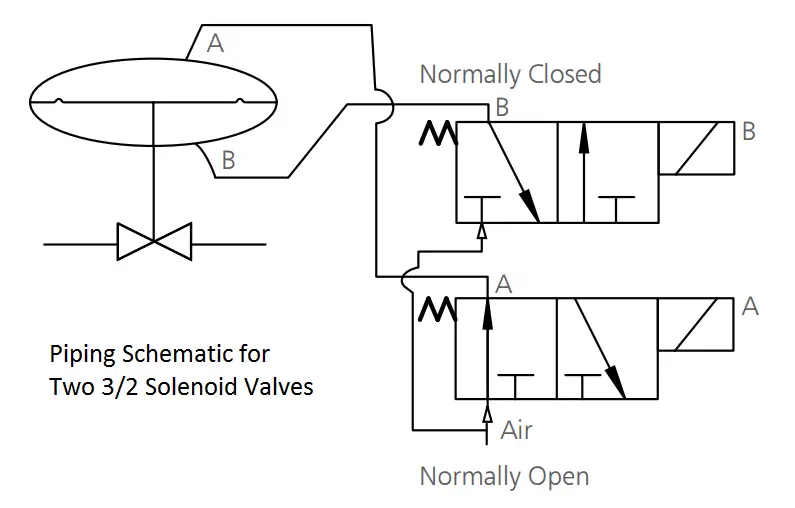
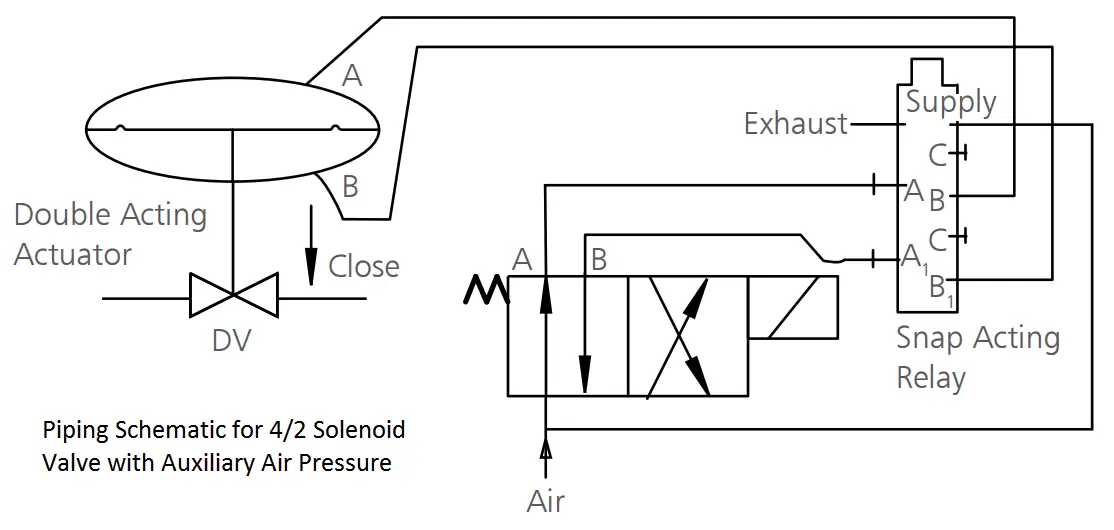
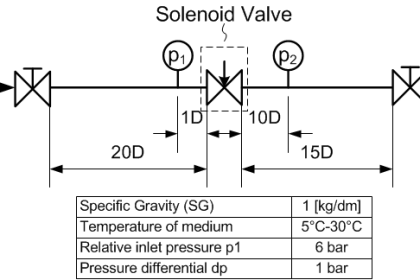
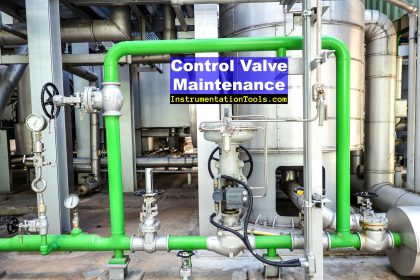



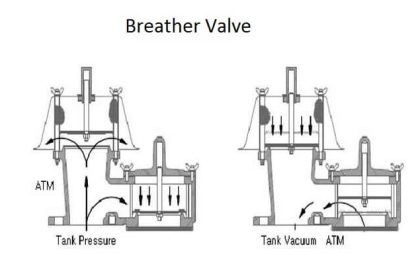
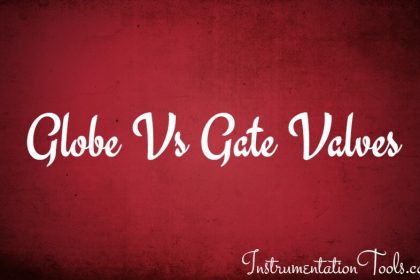
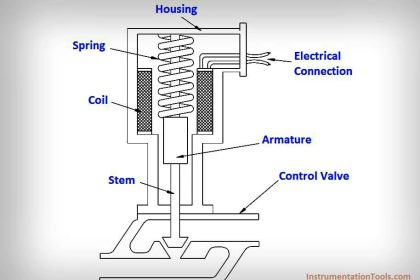
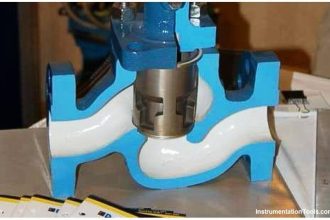
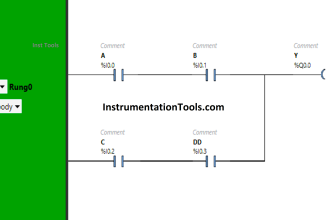

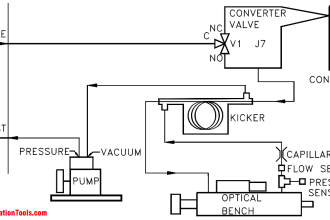
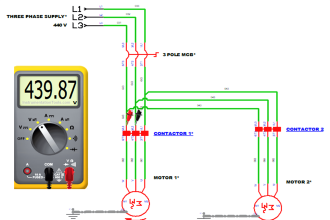
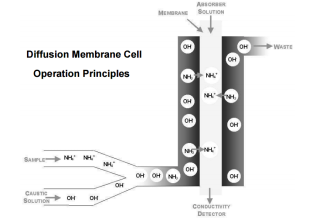



Excelent Explanation, Thanks
Plz correct second paragraph title as following : (Spring to close, air to open). Thanks for sharing.
Hi, Thank you for the correction. Updated.
Thank you , Sir. Keep up the good work.